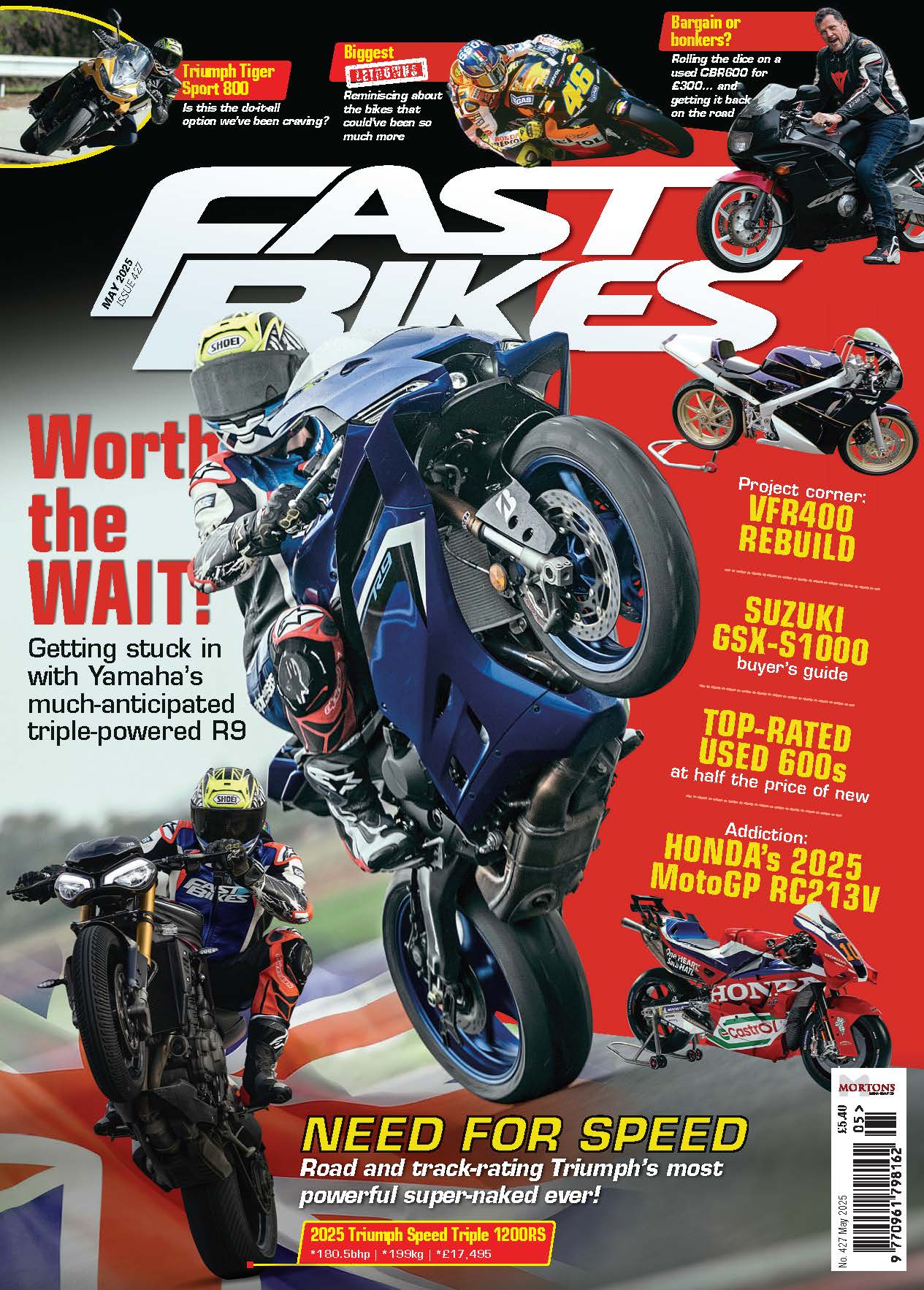We have received payment for the content in this article. Learn more.
There’s no real standard definition for what truly mates a superbike… but we don’t care, we know what they are! They are basically machines that get you excited, bikes with a high-performance engine and a significantly greater capacity than standard bikes.
Most of them are classified based on their engine capacity and performance. Usually, machines with engine capacities of 600cc or more are considered superbikes. However, among enthusiasts, it’s common to refer to 1000cc bikes as superbikes.
Superbike racing
Superbike racing is an increasingly popular form of competition that features modified production bikes. Based on commercially-available models, these machines have been equipped with racing components such as suspension, brakes, and engine components to increase performance in racing conditions.
Superbike races typically take place on closed circuit tracks and feature riders competing over an allotted number of laps. These highly competitive events require both skill and experience to compete effectively at such an elite level.
Some of the world’s most celebrated Superbike races include the World Superbike Championship, the British Superbike Championship, and the MotoAmerica Superbike Championship – each one drawing top riders and millions of viewers worldwide.
Betting on Superbike races has become quite popular lately as well. When it comes to placing a wager on Superbike races, it is quite straightforward. You only need to find a reliable sportsbook and create an account. Of course, you will need to do some research before you start.
Superbike characteristics and features
Engine
Superbikes are known for their relatively larger engines, offering riders more power to work with. Engine sizes can start anywhere around 600cc, such as the Honda CBR600RR, and can even reach as high as ~1440cc, as seen in the Kawasaki Ninja ZX-14. However, most superbikes tend to fall within the 1000cc displacement range. It’s also worth noting that many superbikes are equipped with four-cylinder engines, specifically inline-four cylinders, which are a staple in the industry. While some superbikes may be built with three-cylinder engines like the Triumph Daytona and the Street Triple, others, such as the KTM Duke 1290, feature two-cylinder engines. However, the inline-four cylinder remains the most common engine type and is synonymous with superbikes.
Speed and acceleration
Superbikes are renowned for their speed, and with high-performing engines, it’s no surprise that they can achieve high speeds and do so quickly. But it’s not just about top speed; acceleration is also crucial. For beginners with little or no experience with performance motorcycles, it’s crucial to exercise caution when first starting out with a superbike. In my opinion, it would be wise to first own a less powerful motorcycle before upgrading to a superbike. Before jumping to a superbike, it would be ideal to have some riding experience on an entry-level performance motorbike, such as the Duke 390. The tremendous power available on tap with superbikes can be tempting, so it’s important to remember to ride carefully and responsibly. If ridden well, you can enjoy the ride for a long time.
Costs: One-time, accessories, and recurring
One-time costs associated with owning a superbike include purchasing it itself; superbikes tend to be costlier due to their high-performance capabilities and can range anywhere from several thousand to tens of thousands depending on their make and model.
Additionally, there are one-time expenses related to accessories. Superbike riders invest in high-quality riding gear such as helmets, jackets, gloves and boots in order to ride safely and comfortably; such investments can add up quickly; costs associated with accessories can often reach several hundred or even several thousand dollars!
Costs associated with owning a superbike include maintenance, insurance and fuel. Due to their high-performance engines and advanced technology, superbikes require more frequent maintenance than standard motorcycles; costs for oil changes, tune-ups and occasional repairs can add up quickly – costing several hundred dollars every year alone!
Insurance costs associated with superbike ownership can also add up quickly, being an additional recurring cost in their ownership. Due to their increased risk of accidents and theft, superbikes tend to cost more in insurance than regular motorcycles; costs will depend on factors like rider age, history of driving experience and location but can quickly add up to several hundred or thousands of dollars annually.
Fuel costs are an ongoing cost associated with owning a superbike, since these bikes tend to feature larger engines that consume more gas when being ridden aggressively than regular motorcycles. Prices may differ depending on where the rider lives, how often they ride, and price fluctuations but they could easily add up to several hundred or even several thousand dollars annually!
Weight and riding posture
Superbikes are generally heavier than motorbikes. The weight of a superbike can be intimidating for first-time riders. A heavier motorbike will almost always be more difficult to drop than a lighter motorcycle. Damaged parts of your superbike can be expensive and take a long time to repair. Please be cautious! Also, a newbie or first-timer might need to adjust to the riding position. Although touring and naked superbikes are less demanding, race replicas (RR) with full-faired tracks can be quite challenging. The Kawasaki ZX10R, for example, requires a much more committed riding posture. It is also more physically demanding. All of the superbikes in the table have a very serious riding posture. You’ll feel it if you haven’t ridden a motorcycle with a full fairing before. Long periods of riding in an upright position will take a toll on your neck, back, wrists, and arms. If you ride a lot, it’s possible that you will need to work out in the gym to develop core strength. This is not a joke!




